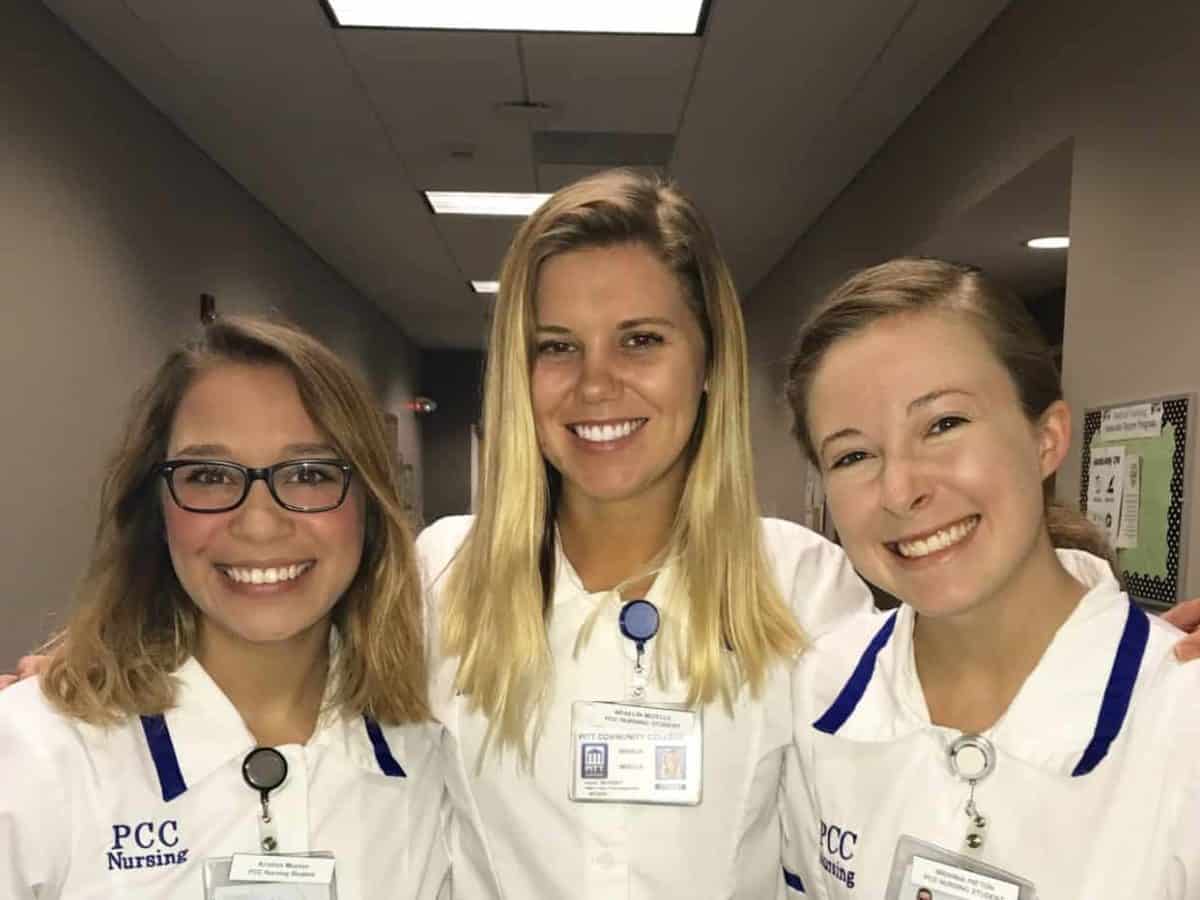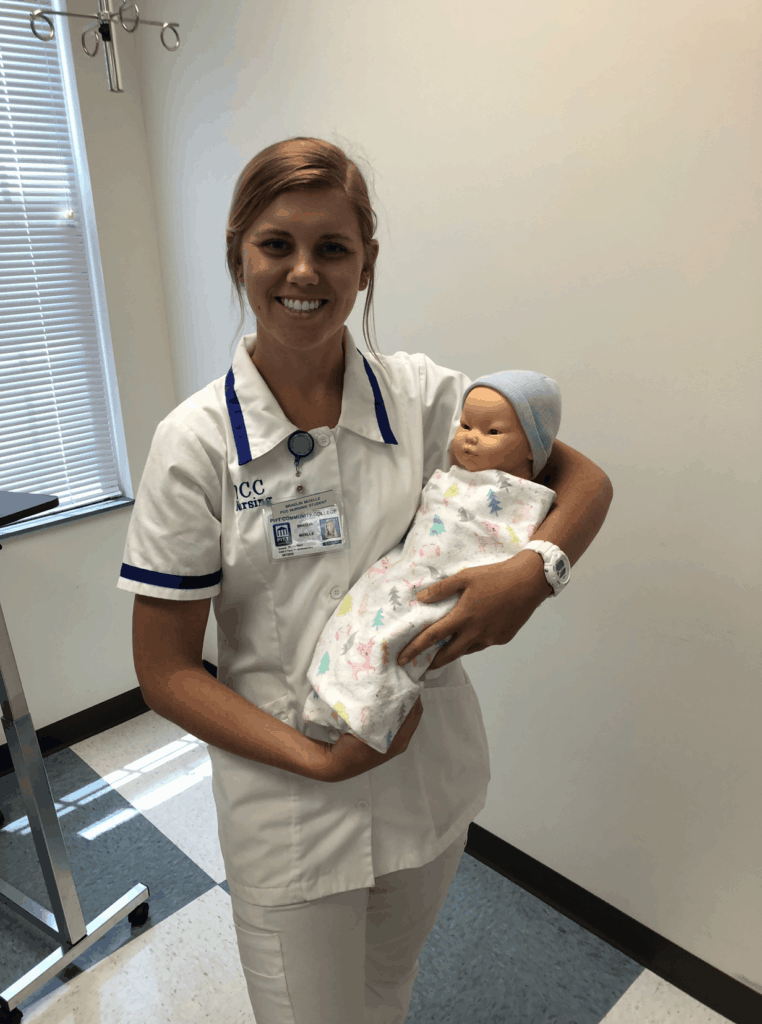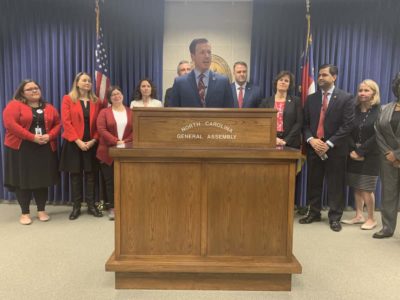

Education has a long history of pushing Pitt County forward. In its early days, it was East Carolina University, newly minted from college to university in 1967, that paved the way for the arrival of Burroughs Wellcome, a large pharmaceutical manufacturer, in 1968. Today, the rise of Pitt Community College (PCC) and its growing biotechnology training programs has helped make Pitt County a must-consider location for pharma companies looking to establish or expand a presence.
Indeed, last April — 50 years after Burroughs Wellcome’s arrival — Mayne Pharma announced the opening of a major Greenville facility that immediately brought the area 100 high-skilled jobs paying, on average, $57,000 a year. At the time, Phil Hodges pointed to the local colleges as a reason for Pitt County’s attractiveness to pharma companies. Hodges, who founded the Greenville company Mayne Pharma acquired prior to entry into Pitt County, saw first-hand the importance of the colleges’ workforce creation power.
“I think a lot of their interest comes from seeing the ability of Mayne Pharma to grow,” Hodges told the Greenville Daily Reflector. “They look at whether these people are able to do what they do in this environment. And ECU and PCC have a huge role in that; if you’ve got a pharma workforce, you can attract more people into it. It’s the abundance mentality.”
With so much economic success tied to community colleges, it isn’t hard to see the connection between the health of community colleges and the health of our state. The community colleges are, at once, a bridge for upward mobility to state residents and an integral part of the workforce development for state industry.
However, community colleges are largely funded based on their enrollment numbers, so when enrollment numbers go down, community college budgets follow. And when their budgets are down, it’s not just a harbinger of trouble for the community college system – it portends challenges for the state as a whole.
Forcing tough budget decisions can shortchange students
There was nobody in Braelin Mizelle’s family that could show her the ropes. She was raised by a loving family that provided what she needed and most of what she wanted – but no one in her family had ever gone to college. Still, after watching the job landscape change dramatically over the last 10 years, her parents were firm in their belief that some postsecondary schooling would be necessary to build a career in North Carolina today.
Yet, there was nothing in the way of advice or experience to pass on. So, Mizelle turned to her community – and her community college, specifically.
Seated in the cafeteria of her high school, she listened to representatives from PCC talk about opportunity and a fast track to a nursing career. She heard about a VISIONS Career Development and Scholarship Program that would not only fund much of her education but offer her career guidance and mentoring. And, more importantly, she heard them say they would walk with her through this brand new process in her life.
She could build a career, and she wouldn’t have to do it by herself.
“Looking back on Day 1, I didn’t know if I could do this,” she said. “But they helped me, my advisors and teachers. And now I have a job offer, so I guess I did it. It was kind of unbelievable for a while.”
Community colleges specialize in turning the once unbelievable into believable. Whether first-generation college students or residents in search of career transition and family-sustaining wages, community colleges have become a bridge from a challenging present to a hopeful future. They do it through affordable and focused education, but also through student support services that help people like Mizelle, who have no prior postsecondary experience in the family.


“It’s interesting when you’re looking at first-generation college students,” said Thomas Gould, vice president of student services at PCC. “You know, sometimes we forget that when students walk in the door, this can be an overwhelming experience for them at a large institution. So we’re trying to embrace them as much as possible and walk them through the process.”
Embracing them, however, requires more than just offering affordable tuition and industry-relevant coursework. It means student support services, by way of mentors and advisors and counselors, all of whom play a part in ensuring students can maximize the academic value of their college experience and stay focused on career and financial goals afterward.
For Mizelle, having advisors that came to her aid and encouraged her when she realized college was going to be much harder than high school was integral. She had teachers who cared about what she was doing and would call her to find out why she wasn’t in class if she ever missed a session. And she had instructors, like Dr. Bernadette Kenny in anatomy, who would meet with her before and stay with her after class to spend extra time on material when they saw she was struggling with certain concepts.
Two years after beginning her journey, Mizelle looks back in wonder. High school came easy to her, she says, but it was a different story at PCC. She credits her advisors and instructors, and she is grateful to the school at large because it held her accountable and cared if she was in class and what other things were going on in her life that might impact her academic and future success.
“It’s not like a money pit,” she said. “They actually cared. It was the right choice for me, for sure.”
Supporting students with advisors and mentors costs money, however. And with enrollment down across the state, this has put a crunch on the colleges. It’s forcing them to be creative and innovative, they say, while staying true to their mission of helping as many local residents as possible.
“We’re not going to pull money from needed programs to other programs because of funding,” Gould said. “We’re going to stretch some dollars. We’ll make sure that our partners in industry are helping out with scholarship or needed equipment and things like that. We always have to be conscious of our budget, but we try not to let it dictate how we can best serve our students.”
Funding for all of these people, say community college leaders, is essential for them to mold and help generate a community’s workforce. So while enrollment dips are expected during good economic times, maintaining programs and services amid budget cuts is nonetheless difficult and can have an impact on the students who will be tomorrow’s workforce, whether they enter a good economy or not.
Enrollment impacts the community’s industry
When the funding to prepare their future workforce is down, local businesses feel it, too. For industries like mechatronics, machining, welding, construction, biotechnology, information technology, and nursing, community colleges are building workers for the high-skilled workforce that North Carolina’s businesses and industries say they need.
“The community colleges are the workforce development engine of those areas,” Gould said. “We provide the infrastructure, the individuals who are going to really move, not only the state, but local communities forward. And at the same time, really enable people to transform their lives. A community college education is transformative for individuals, for their families, and for whole communities.”
And, at a higher rate than four-year universities, community colleges do this locally. According to research from Emsi and The Wall Street Journal, 61 percent of community college graduates stay within 50 miles of their alma mater. At PCC, that number is even higher – with 70 percent of graduates remaining in the county, according to Gould.
This suggests that community colleges, in particular, are uniquely equipped to develop and also to retain the sort of talent that is in demand within their local economies. And in North Carolina, the state’s community college system does it through a comprehensive approach of offering two-year associate degrees, four-year college transfer tracks, basic skills education, short-term workforce training, and certificate programs. With these broad offerings, North Carolina’s community college system is the third largest in the country.
“You think about having 700,000 students annually in the community colleges,” North Carolina Community College System President Peter Hans said. “We’re a state of roughly 10 million people. That’s 7 percent of the state’s population somehow, someway enrolled. … It really is the key to workforce development [and] it’s critical to if we’re going to address socioeconomic mobility and that ladder to the middle class, if we’re going to address the rural-urban divide. We’re the infrastructure in those areas for workforce development.”
In Pitt County, local industry and businesses have come to this realization – and are closely monitoring the health of PCC. Indeed, as budgets tighten, they have stepped up to help out.
“What companies are really starting to understand is that local talent is the best talent,” Gould said. “The investment in the local talent, these are individuals that are part of the community, have roots in the community – sometimes for generations – they’re going to stay here. They’re a long-term investment in their workforce.”
Mayne Pharma, the drug maker which employs hundreds in Greenville, is committed to the investment. They have worked closely with PCC on scholarships, providing equipment and — perhaps most importantly — working with the college to help them understand what their future employees need to know.
The adaptability of community colleges is one of the reasons Mayne Pharma and other local businesses focus on PCC as a workforce pipeline. As manufacturing and technology changes, they feel they can work more quickly and directly with the community college to create a more responsive workforce in a shorter amount of time.
“That’s a description of community colleges in so many ways,” Hans said. “We’re the ones who are positioned to respond and to help those in need of more educational opportunities. Because it’s accessible and it’s flexible and it’s affordable and it’s high quality. So that’s the workforce development piece. But it’s also the life-changing piece, that when you need community colleges, they will be there for you. Not just jobs. It’s jobs, but it’s meaningful careers as well.”
This week, EdNC will be taking a deeper look into community college enrollment and how the health of community colleges impact students and industry, today and in the future. Enrollment dips, as we will explore this week, occur for many reasons and have a direct impact on community college budgets due to the way the state funds community colleges.
“It’s not just one thing or a simple fix type of thing,” Hans said of addressing enrollment statewide. “There’s a lot there. But we have to start, I think, with asking the right questions.”
In the rest of the series, we will look at how enrollment is measured, the demographic trends likely to have an impact on enrollment in the future, the impact of enrollment declines at small to large colleges across the state, and how Richmond Community College, a small, rural school, is bucking the downward enrollment trend. Because it is impossible to discuss enrollment without discussing funding, we will also look at how community colleges are funded.


